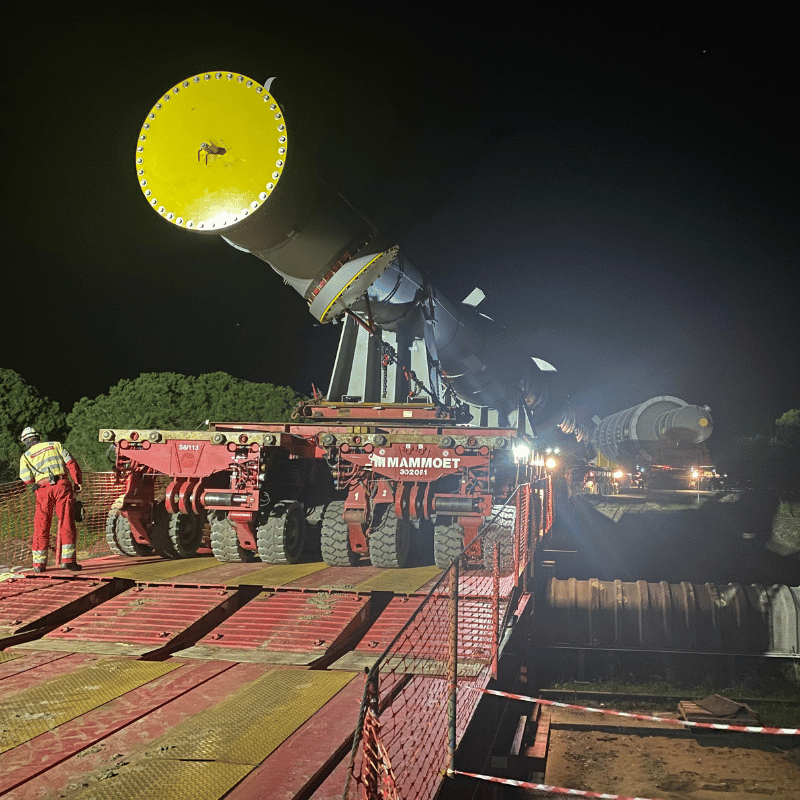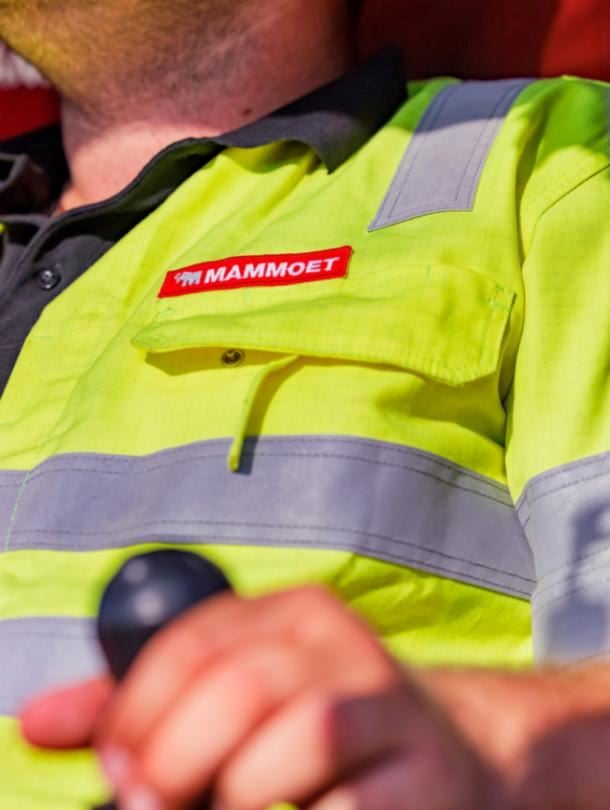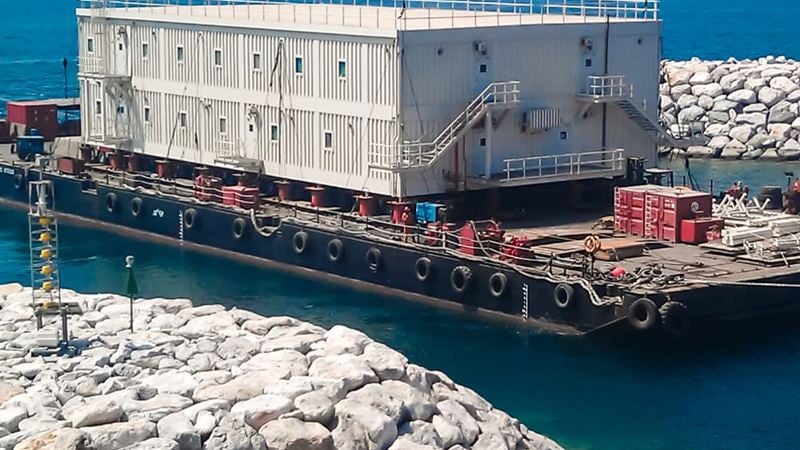
Sector:
Oil and Gas
Expertise:
Heavy transport
Project logistics
Benefits:
Optimized schedule
Protected infrastructure
Location:
Portugal
Heavy haul transport expertise beats a trio of different challenges by using SPMTs and a temporary bridge
Mammoet's heavy equipment and expertise helped keep the ALBA project on time
The ALBA project will see significant expansion of the Sines Industrial Complex in Portugal. This large facility includes a linear polyethylene plant and a polypropylene plant.
Planned for operation by 2025, they will provide 100% recyclable polymeric materials for use in pharmaceutical, automotive and food industries.
Performing heavy logistics in the complex for over twenty years, Nippon Express approached Mammoet as a partner to perform heavy haulage of 12 cargo pieces, including four oversized components, to the site.
Over a route of 14 kilometres, there were three significant obstacles that the convoys had to overcome – all relating to bridges and all preventing the oversized cargo from passing.
Using bridge-crossing techniques with Self-Propelled Modular Transporters (SPMTs), Mammoet presented a series of solutions to ensure that the components arrived safely, and without delay.
Heavy machinery transportation and the three-bridge challenge
Near the exit of Sines Port sits a large overhead conveyor belt. Whilst not in currently in use, dismantling it was not permitted.

Due to the limited clearance beneath the conveyor belt, an alternative solution had to be found for transporting oversized components.
It was decided that the four largest components, the reactor (445t), product purge bin (220t), and two multizone circulating reactors (158t and 167t), be received at a neighbouring container terminal through heavy equipment logistics.
This was a much busier location, so precise scheduling, organisation and project management was essential. This alternate route meant that the convoy could take an alternative path – over the conveyor belt - using a temporary bridge made of steel that Mammoet constructed.
Further into the route there were more challenges, including a bridge over a pipe rack. With the bridge unable to take the weight of the 445t reactor, 4 x 24 meters of rafting beams were used.
The beams were set over the bridge, resting on each of the bridge’s pillars. Alvaro Macias, Sales Manager at Mammoet, explains why:
“What we wanted to achieve with the rafting beams is to not step onto the bridge, only on its pillars. The pillars had sufficient capacity to support the weight of the components.

Clearing a hurdle for the SPMT transport
The final challenge was an old railway bridge. It too was unused but could not be demolished. Local authorities would only permit its steel top to be temporarily removed, not its abutments.
With the space between the abutments measuring 9.2m, and the reactor’s diameter 9.9m, Mammoet provided a solution to transport the reactor at a higher level, enabling its trunnions to clear the abutments without the need for removal.
“What we proposed was to lift the reactor using an extra elevation between the SPMT trailers and the component, so that it could be lifted above the wall.
This was an innovative solution, avoiding the need to dismantle the bridge. With our experience, we were able to provide the right heavy equipment, and the right heavy haul trucking solution, for the route.”
A total of 52 axle lines of Mammoet SPMTs were used to move the reactor, with the less heavy components needing just 24. Movements were carried out at night, with each item taking two shifts.
Mammoet's solutions reduced time and costs by utilising special SPMTs or modular transporters, bridge-crossing techniques and customised solutions to minimize disruptions.
“It was a difficult and tough operation, but we knew we had the expertise and equipment to do the job,” closes Macias. “We performed a complete study of the route with all the bypasses to be done and that set us up for success.
Our experience of performing this type of transportation in the area was also significant. This gave the client confidence that everything would be done to the highest standard when it came to safety and efficiency.”




